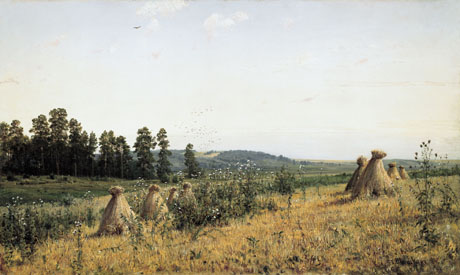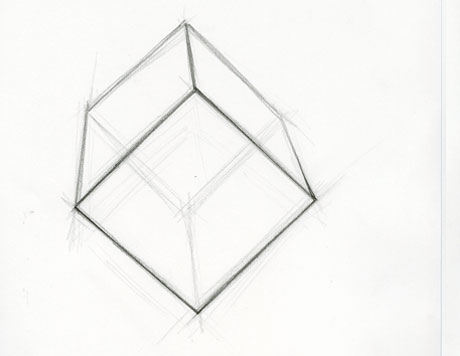Basic Perspective: Eye Level and Horizon Line
Horizon Line and Eye Level
The terms “horizon line” and “eye level” are often used synonymously. Horizon line/eye level refer to a physical/visual boundary where sky separates from land or water. It is the actual height of the viewer’s eyes when looking at an object, interior scene, or an exterior scene. However, the term “horizon line” generally refers to drawings that are outdoors while “eye level” generally refers to drawings that are indoors. It is also a reference line, in linear perspective, that extends parallel (left or right) on the format.
Note: Format is the entire height and width of the drawing paper, the entire canvas, illustration board, photograph, etc, in 2-dimensional art.
Below are examples of eye levels and horizon lines. Click the thumbnails to view the overlaid lines.

Horizon Line Example: Photograph by Edward S. Curtis, ca. 1929.



Horizon Line Example: Ivan Shishkin’s Polesie Landscape (1884)


 Eye Level Example: This interior room has an eye level.
Eye Level Example: This interior room has an eye level.



Eye Level Example: This interior room has an eye level.



Eye Level and Horizon Line: All three of these images show people in relation to the horizon line of the ocean. The subtle differences of where their eyes are, relative to the horizon line, tells us that: the boy with the guitar is slightly above the viewer’s eye level, the woman is right at the viewer’s eye level, and the man in front of the boat is slightly below the viewer’s eye level.

Eye Level and Horizon Line: In the drawing above, the eyes of the each of the old masters are placed on the horizon line. The eye level and horizon line then, in this drawing, also appear to be the same as the viewers.

Eye Level and Horizon Line: Both horizon line and eye level lines are always perfectly horizontal, even when the land is sometimes at a slope.



Horizon Line: Be careful not to confuse skyline with horizon line. Skyline is also where the sky and land meet, but is generally in reference to mountains which are almost always above the actual horizon line/eye level.








With a knowledge of eye level and perspective (convergent lines and pitch), an artist can control the physiological sensation of the viewer. He can create the illusion for the viewer of looking up at an object, right at it, or below it. The same will be true with interior or exterior environments.

- Eye Level and Pitch: Notice the decreasing pitch of the planes that make up the tables and computers as the eye level/horizon line moves closer to the ceiling.







Eye Level and Cube Pitch: All three of these images show a cube where the viewer’s eyes are either below, right at (slightly above), or above the eye level/horizon line.





